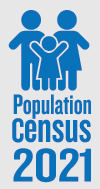New population count in 2021
View(s): While Sri Lankans are preparing for polls this year and in mid-2020, the Department of Census and Statistics (DCS) is preparing for another, island-wide exercise: Counting the population.
While Sri Lankans are preparing for polls this year and in mid-2020, the Department of Census and Statistics (DCS) is preparing for another, island-wide exercise: Counting the population.
The DCS is to conduct its next population and housing census in 2021 which would cost Rs.3.2 billion, according to DCS Director General Indu R. Bandara.
The census will use the latest technology with about 26,000 enumerators fanning across the countryside between January and March 2021, armed with tablet computers to gather the information and analyse it.
The last census was held in 2012, ending a 30-year break owing to the conflict, which recorded the population of Sri Lanka at 20.3 million while current estimates put the population at 21 million.
Preparations are already underway to conduct the 2021 census, Ms. Bandara said, adding that there would be several new elements including collecting data on child poverty. Speaking at a child poverty conference in Colombo last week, she said that the DCS is currently doing a first-of-its-kind census of children’s homes to examine the actual problem facing children.
The latest Household, Income and Expenditure Survey (HIES) is also being conducted throughout 2019 and across the country. These surveys provide valuable data for economic, social, business and marketing planning. In 2012, the DCS completed the 14th Population & Housing Census. In a report then, the DCS said: “Enumerating and collection of information, from the totality of a populace inhabiting the total area of a country, based on their usual place of residence, at an appointed day, is a gigantic task by any standards. Thus, it behoves a responsibility on the users of the information, to make the best and most appropriate use of the information, so collected.”
It said that population density is 325 persons per square km of the country, adding that two third of the total population lives in the four provinces, Western (28.7 per cent), Central (12.6 per cent), South (12.2 per cent) and North-western (11.7 per cent). The highest population is recorded in Colombo district while the lowest population was recorded in Mullaitivu district in 2012.
Further, according to the demographic information, 48.4 per cent of the total population are males while 51.6 per cent are females. The elderly population aged 60 years and over, was 12.4 per cent of the total population.
“When population is analysed on the basis of ethnicity, it is revealed that the majority, 74.9 per cent of the total population is Sinhalese. Besides, Sri Lankan Tamils at 11.2 per cent, Indian Tamils at 4.1 per cent, Sri Lankan moor at 9.3 percent and other ethnicities at 0.5 per cent, represent the total population of Sri Lanka. When the total population is analysed on the basis of religion, a similar pattern emerges and accordingly the majority of the population, 70.1 per cent are Buddhist while the next popular religion, Hinduism is patronised by 12.6 per cent of the population. The believers in Islam are recorded as 9.7 per cent of the population,” the report said adding that on housing, the census has reported the existence of 5.3 million building units used as occupied units by the population.


